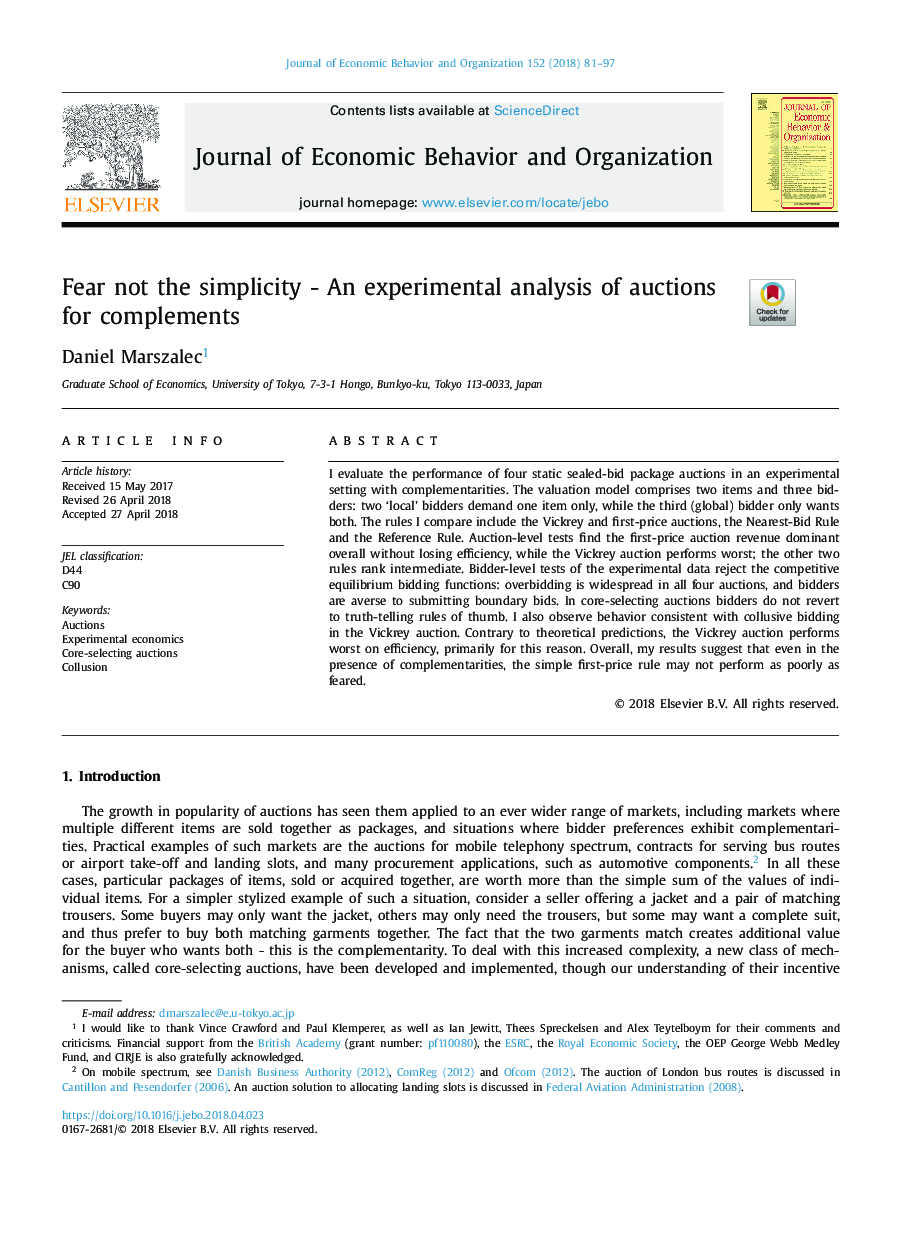| Article ID | Journal | Published Year | Pages | File Type |
|---|---|---|---|---|
| 7242441 | Journal of Economic Behavior & Organization | 2018 | 17 Pages |
Abstract
I evaluate the performance of four static sealed-bid package auctions in an experimental setting with complementarities. The valuation model comprises two items and three bidders: two 'local' bidders demand one item only, while the third (global) bidder only wants both. The rules I compare include the Vickrey and first-price auctions, the Nearest-Bid Rule and the Reference Rule. Auction-level tests find the first-price auction revenue dominant overall without losing efficiency, while the Vickrey auction performs worst; the other two rules rank intermediate. Bidder-level tests of the experimental data reject the competitive equilibrium bidding functions: overbidding is widespread in all four auctions, and bidders are averse to submitting boundary bids. In core-selecting auctions bidders do not revert to truth-telling rules of thumb. I also observe behavior consistent with collusive bidding in the Vickrey auction. Contrary to theoretical predictions, the Vickrey auction performs worst on efficiency, primarily for this reason. Overall, my results suggest that even in the presence of complementarities, the simple first-price rule may not perform as poorly as feared.
Related Topics
Social Sciences and Humanities
Economics, Econometrics and Finance
Economics and Econometrics
Authors
Daniel Marszalec,
